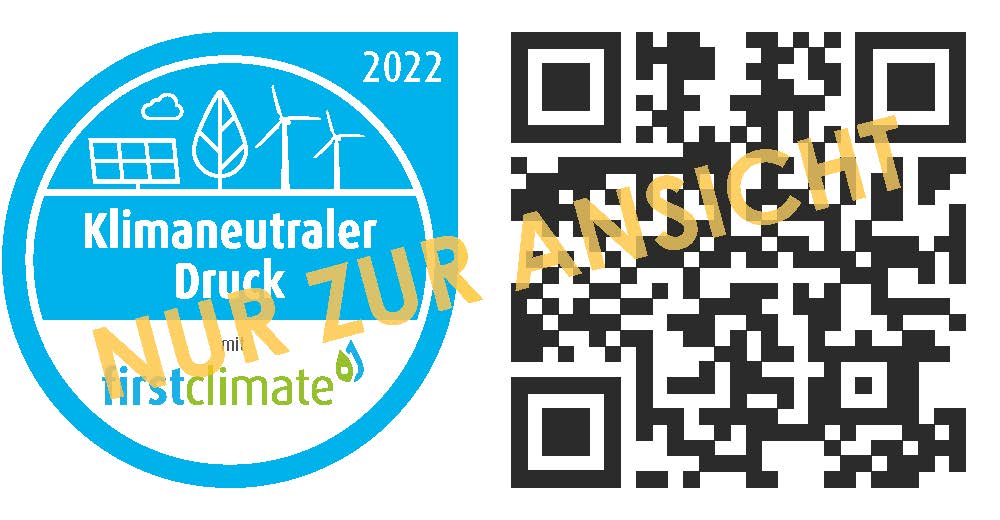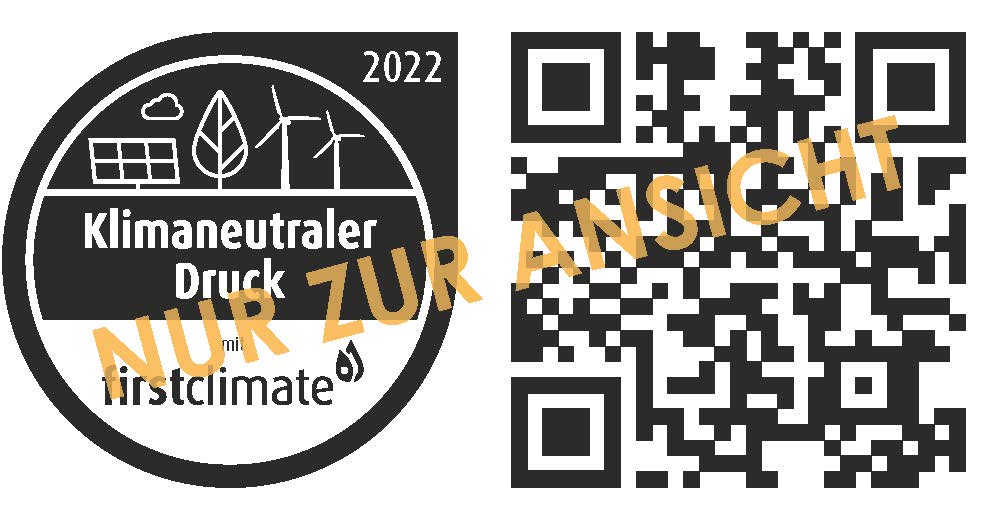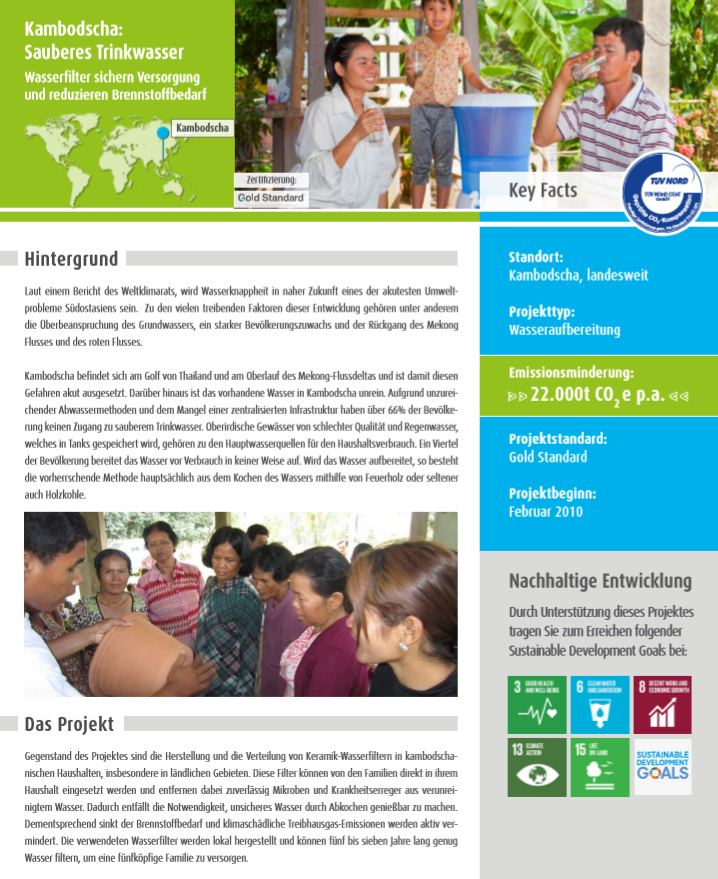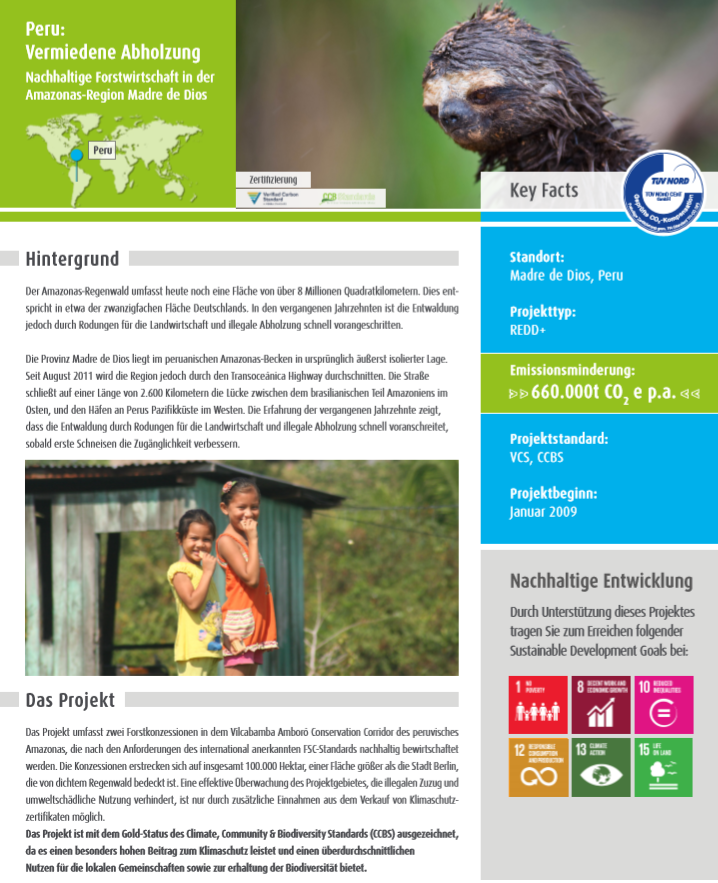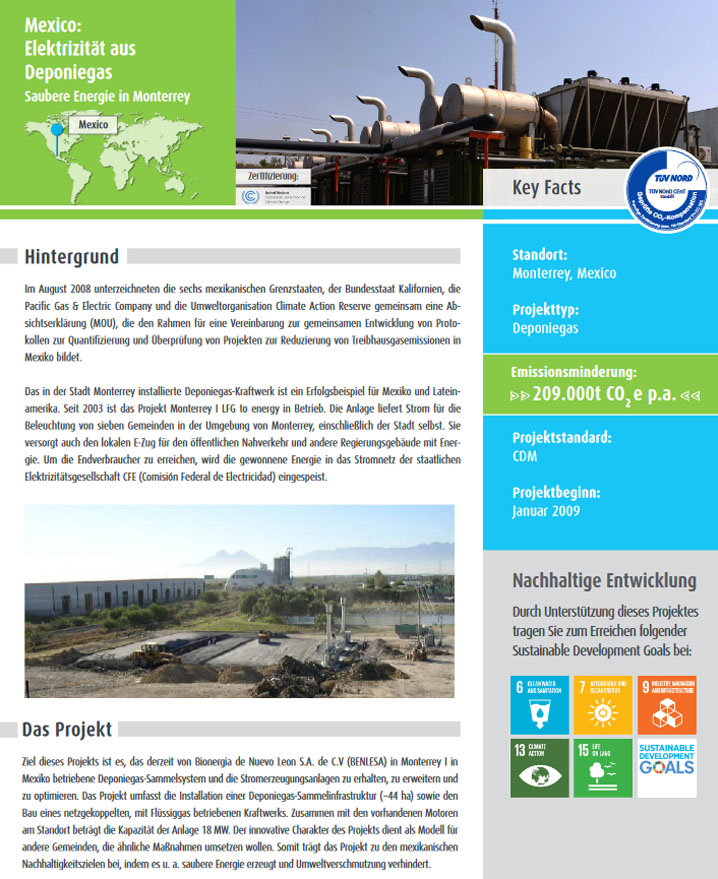Climate protection contribution
FOR A COMMON FUTURE
Make your contribution to climate protection
Help us to further improve book production. We invest and optimize a lot to avoid CO2. Unfortunately, measures to avoid CO2 require time or technical solutions that are not yet available. Our suppliers are also working on CO2 avoidance. Unfortunately, not all CO2 emissions can be avoided at present.
So invest now in your contribution to climate protection and we will invest in new technologies and certificates from our partner First Climate. This partner uses your contribution in climate protection projects all over the world.
In the overview you can see the projects we support as well as more detailed information from our partner First Climate.
Cambodia: Clean drinking water
Water filters secure supply and reduce fuel consumption
Cambodia is located on the Gulf of Thailand and on the upper reaches of the Mekong River Delta and is therefore acutely exposed to these dangers. Furthermore, the existing water in Cambodia is polluted. Due to inadequate sanitation methods and the lack of a centralized infrastructure, over 66% of the population does not have access to clean drinking water. Above-ground water of poor quality and rainwater stored in tanks are among the main sources of water for household consumption. A quarter of the population does not treat the water before consumption in any way. If the water is treated, the predominant method consists mainly of boiling the water using firewood or, more rarely, charcoal.
India: Run-of-river power at the foot of the Himalayas
Due to its location on the southern edge of the Himalayas, Sikkim has great potential for hydroelectric power generation. Many water-rich rivers, which originate from the mountain glaciers, run through the country from north to south, and there are already several hydroelectric plants producing environmentally friendly electricity. The run-of-river power plant of the state-owned NHPC on the Teesta River is by far the most powerful of these plants. Three 170 MW turbines provide around 2600 GWh of clean electricity annually - enough to power several million northern Indian households.
Peru: Avoided deforestation
Sustainable forestry in the Amazon region of Madre de Dios
The province of Madre de Dios is located in the Peruvian Amazon basin in an originally extremely isolated location. Since August 2011, however, the region is cut through by the Transoceánica Highway. Over a length of 2,600 kilometers, the road closes the gap between the Brazilian part of Amazonia in the east and the ports on Peru's Pacific coast in the west. The experience of the past decades shows that deforestation through clearing for agriculture and illegal logging progresses rapidly as soon as first aisles improve accessibility.
Read all
Bangladesh: Cooking Oven Program
PROJECT ENABLES NATIONWIDE DISTRIBUTION OF EFFICIENT COOKING STOVES
In addition, the development of toxic fumes can cause serious health problems. This is especially true for women and children, as they spend most of their time at home. Respiratory diseases are the second leading cause of death in Bangladesh. Inefficient traditional cooking methods are also a major source of CO2 emissions, contributing to the acceleration of climate change.
Mexico: Electricity from landfill gas
CLEAN ENERGY IN MONTERREY
The landfill gas-fired power plant installed in the city of Monterrey is a success story for Mexico and Latin America. The Monterrey I LFG to energy project has been in operation since 2003. The plant provides electricity for lighting seven municipalities around Monterrey, including the city itself. It also powers the local e-train for public transportation and other government buildings. To reach end users, the energy generated is fed into the power grid of the state electricity company CFE (Comisión Federal de Electricidad).
Read all
Paths to climate protection
CO2 compensation and green power procurement for companies
The Paris Agreement of 2015 is considered a milestone in international climate protection efforts. In it, the signatory states commit themselves to the goal of limiting global warming to below 2 °C.
The agreement comes into force in 2020. However, in order to keep global warming below the agreed target, climate protection efforts must be intensified in the short term. The Paris Accord therefore opens up new opportunities for voluntary climate protection commitments and expressly supports corresponding initiatives by industry.
Therein lies great potential: According to estimates by the RE100 initiative, a switch by the private sector to 100% renewable energies alone would save up to 15% of global CO2 emissions.
Read all
Communicating climate protection correctly
Implementing or supporting climate protection measures themselves is one of the best ways for companies to demonstrate their commitment to the environment. In addition, such a commitment can help to win the long-term support of particularly environmentally conscious stakeholders. Reducing a company's own CO2 emissions therefore not only helps the climate, it also creates new business opportunities.
The vast majority of our customers have decided to pursue a long-term climate protection strategy. This creates credibility, which is the basis for successful communication in the area of climate protection.
